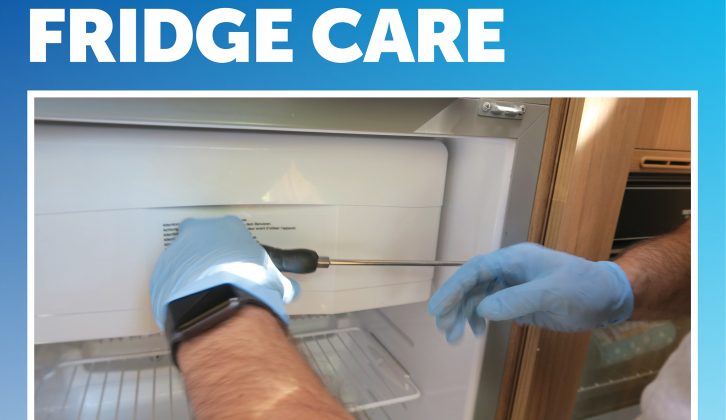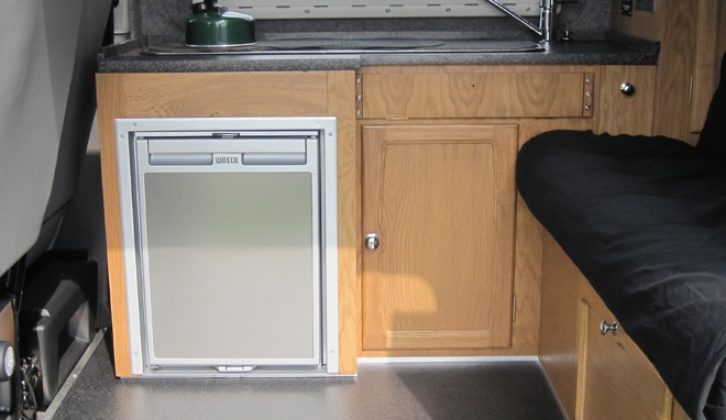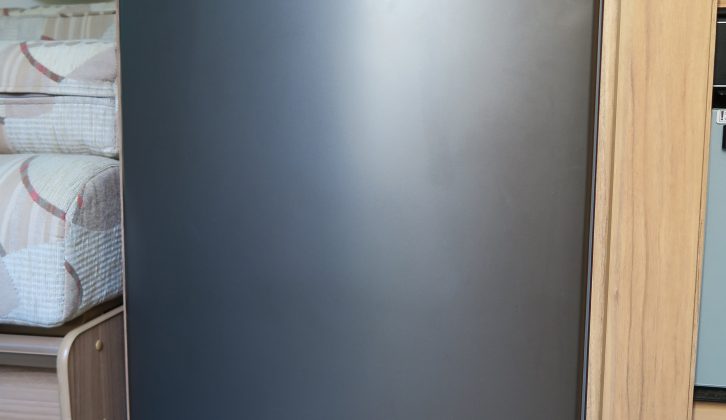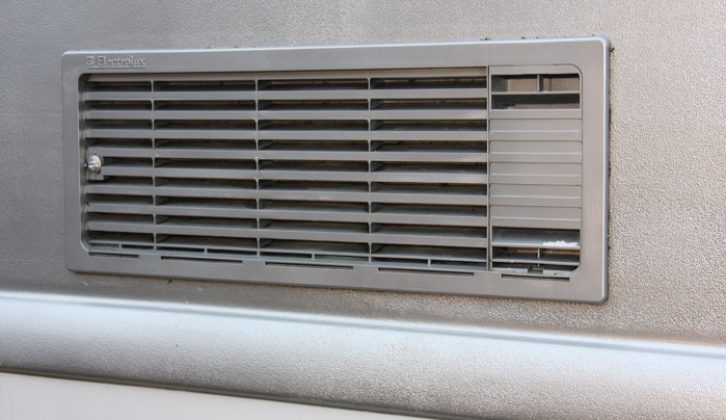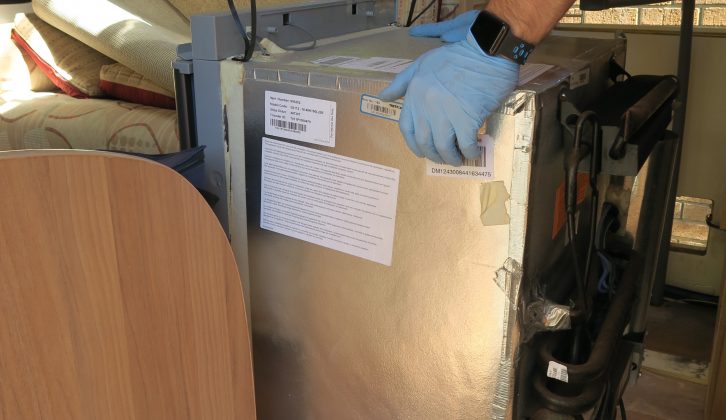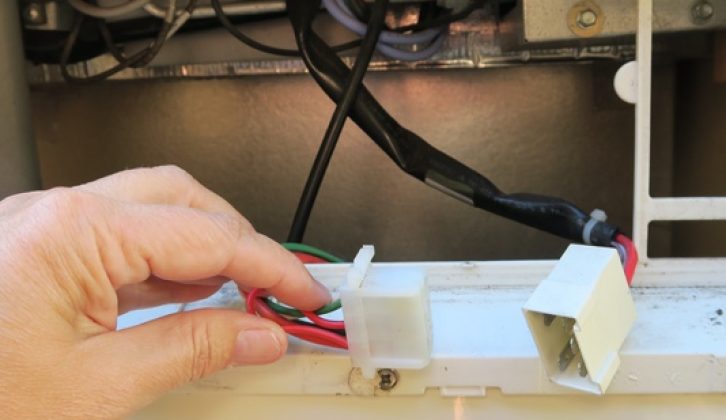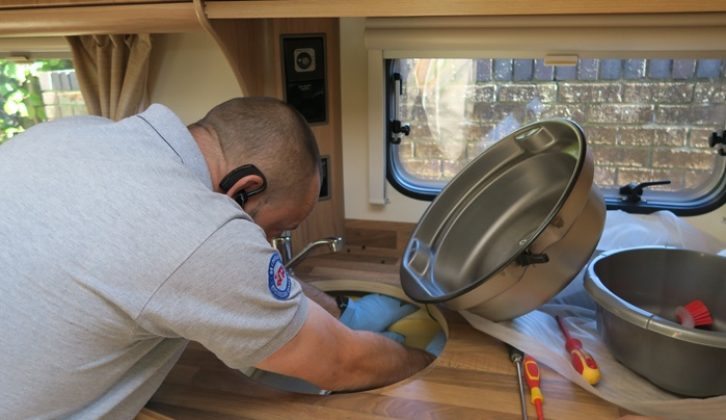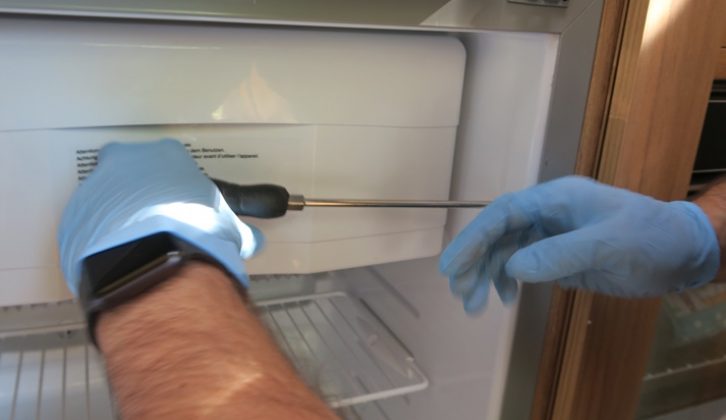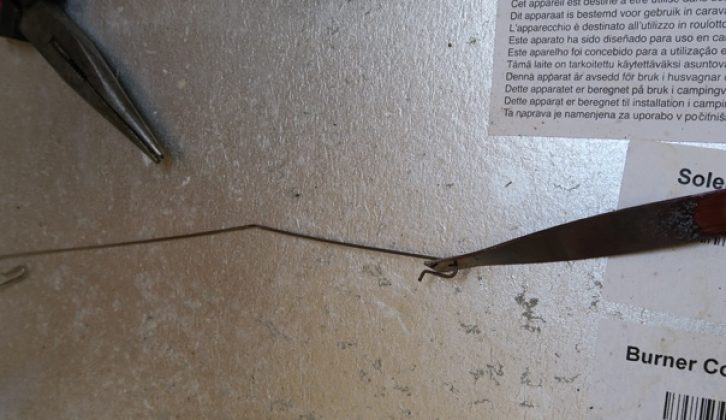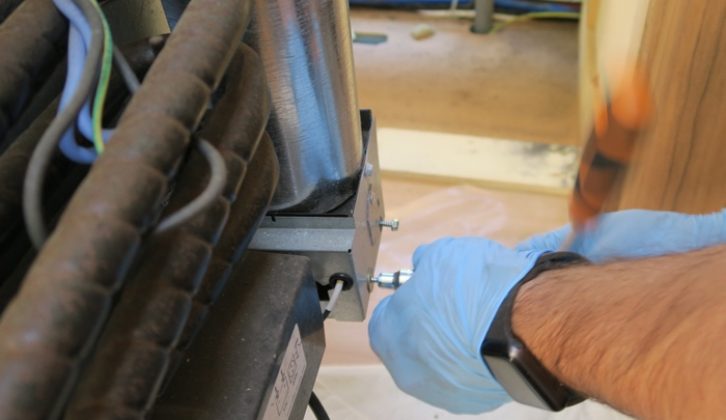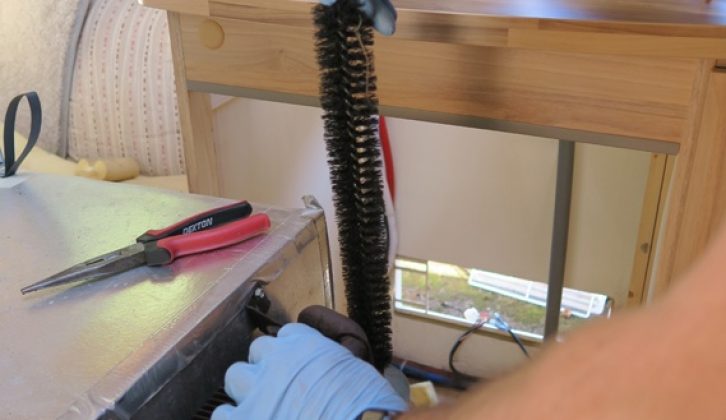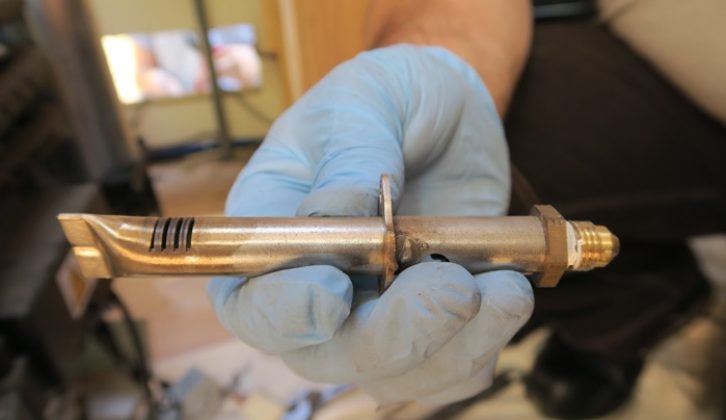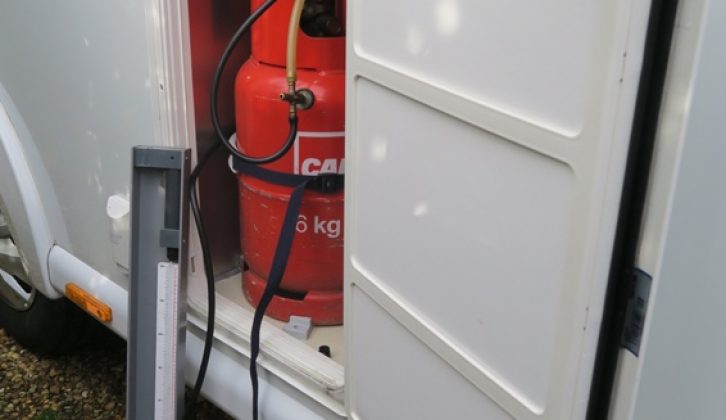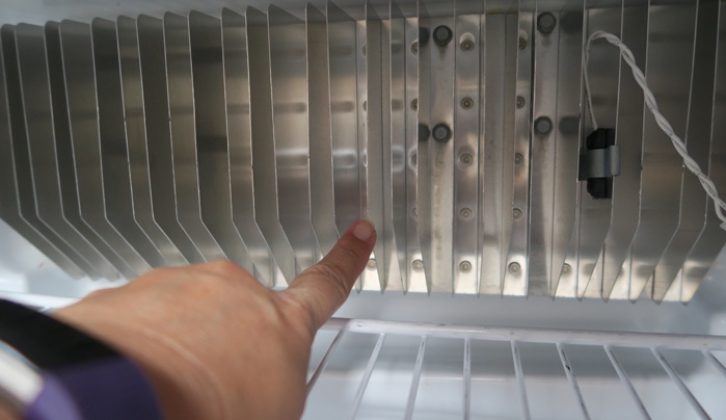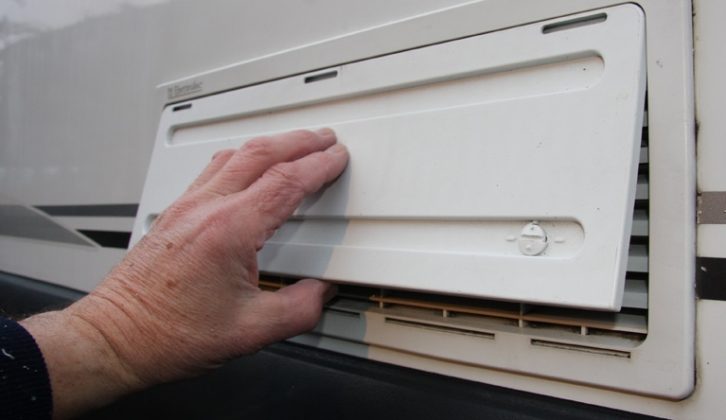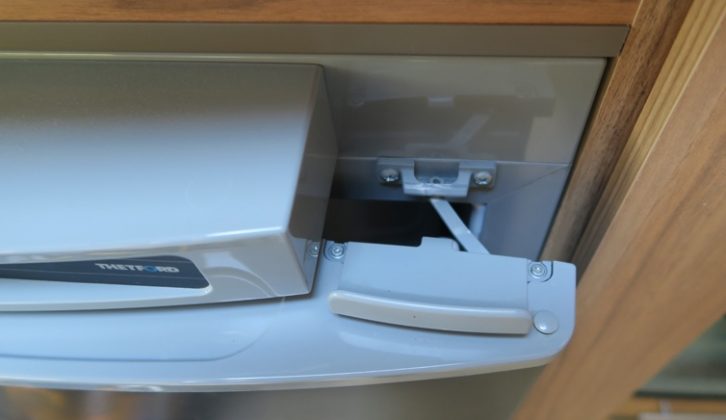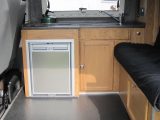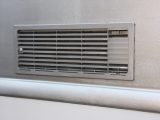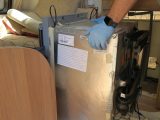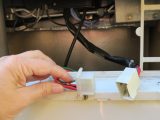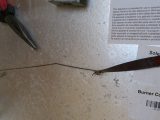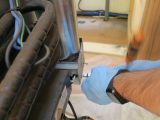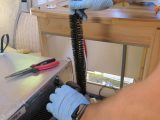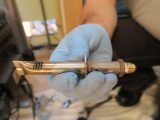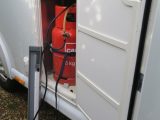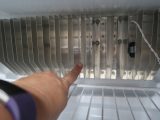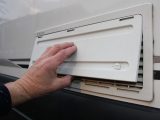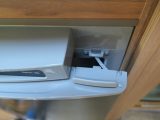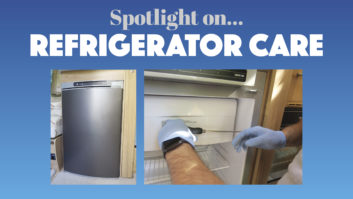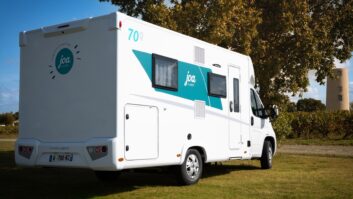Like any gas appliance, a ‘van refrigerator must be serviced at frequent intervals and an annual service is recommended by major manufacturers. However, this only applies to absorption fridges or three-way fridges. First, let’s look at the types of refrigerators found in leisure vehicles.
Absorption fridges
Also known as ‘three-way fridges’, these are found in most coachbuilts. Heat is used to circulate refrigerative chemicals around the cooling unit. The heat used to provide the energy comes from one of three sources:
- A burner (butane or propane)
- A heating element that runs on 12V power from the leisure battery
- A heating element operating on 230V AC when coupled to the mains supply.
Compared with compressor fridges, absorption fridges’ main strengths are versatility and quietness. Installation is more critical and their efficiency relies on periodic servicing.
However, they can be more costly, they require ventilation apertures in the side wall, routine servicing is essential and removal for repairs/servicing isn’t always easy.
Compressor fridges
These are similar to domestic fridges and tend to be more common in van conversions. Like home appliances, they employ a compressor to circulate cooling chemicals.
However, household appliances run on 230V mains power, whereas ‘van compressor models run on a 12V supply from the leisure battery.
Normally, they don’t need servicing, nor do they require ventilation outlets cut in the side walls. They are also relatively cheap. However, they tend to be noisy and can quickly run down your leisure battery.
Refrigerator service
A habitation service includes checking the fridge is operating, but will not involve pulling it out for cleaning. Servicing the fridge is an optional extra, normally costing around £85.
The first step is to remove the fridge, so the rear is accessible. This might include disconnecting the refrigerator through the vent, removing the sink and unscrewing the fridge from its housing unit.
The burner tube is an insulated flue above the gas burner. The suspended plate in the burner tube – the baffle – is removed and cleaned. To gain access to the gas burner, a steel shield is disconnected from the casing. The burner assembly is pulled away, to prevent soot falling on it when the flue is cleaned. A purpose-made wire brush is used to remove sooty deposits from the flue pipe, making sure that debris doesn’t fall into the assembly.
Every time a refrigerator is serviced, a tiny gas jet has to be taken out and replaced. Gas jets are inexpensive and nothing should ever be poked into the hole in an attempt to clean away soot.
Burner slots can be blocked by rust, soot and dead spiders, causing poor flame performance. In some Dometic products, the burners must not be cleaned or poked with wire.
The flame-failure device has to be cleaned and secured, and its couplings inspected to ensure they’re tight. The igniter is inspected and cleaned, and its spark gap readjusted if necessary.
The gas system undergoes a tightness test, where a manometer is used to check for leaks in the system after the refrigerator has been reinstalled. Electrical connections are checked and voltage readings taken.
I would recommend using a mobile engineer or service centre registered with the Approved Workshop Scheme.
Basic tips
- The silver fins in the top of the fridge draw heat from the food compartment, so must never be covered.
- Avoid packing the fridge too tightly with food – air needs to circulate.
- If outside temperatures are below 10ºC (50°F), fit winter covers over the vent to prevent overcooling.
- When your fridge is not being used for an extended period, leave the door ajar to prevent mould growth.
- If you have insufficient cooling on busy sites in hot weather, try running the fridge on gas, rather than the mains.
- Avoid using household products to clean inside your fridge. Try Thetford Bathroom Cleaner, or half a litre of lukewarm water with a teaspoonful of bicarbonate of soda.
Special thanks to Mark Caravan Medic for his professional help.
A habitation service includes checking the fridge is operating, but will not involve pulling it out for cleaning. Servicing the fridge is an optional extra
